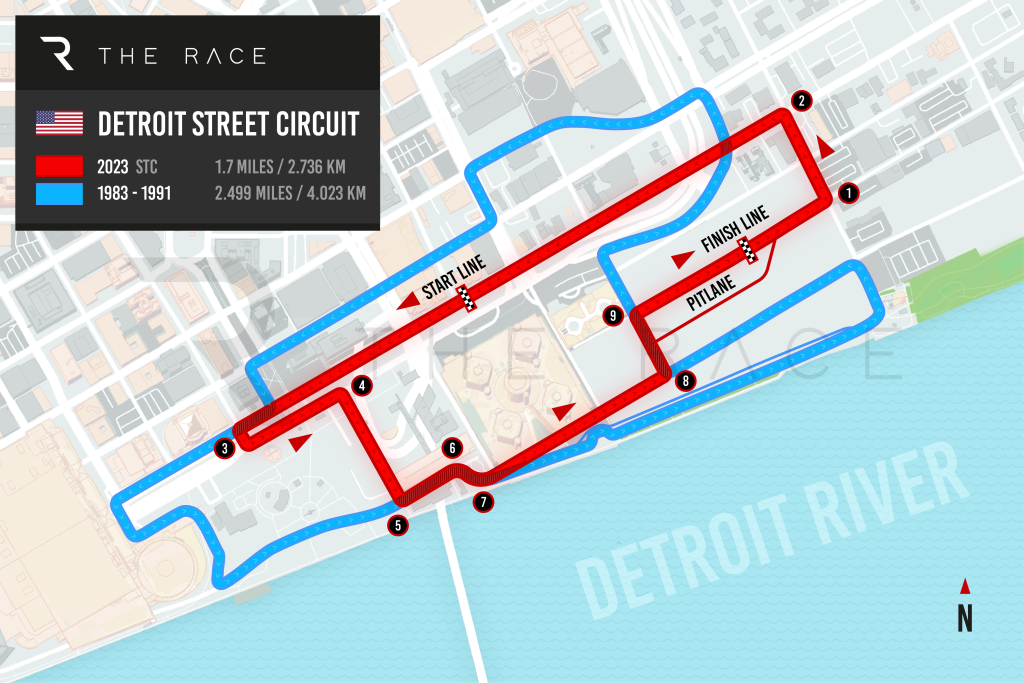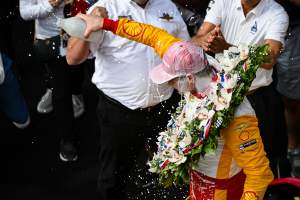This weekend marks the return of a downtown street circuit in Detroit, replacing the Belle Isle venue on the IndyCar calendar.
The return – supported heavily by Penske Entertainment, the owner of IndyCar – has been long-awaited by many, and has promised to be one of the most fan-friendly events of the year.
What is the track like? How similar is it to the Detroit Grand Prix Formula 1 layout of the 1980s? What do the drivers think of it? And what’s this about a split pitlane?
The Race is here to answer the questions ahead of this year’s event.
How did the event come about and why is it exciting?
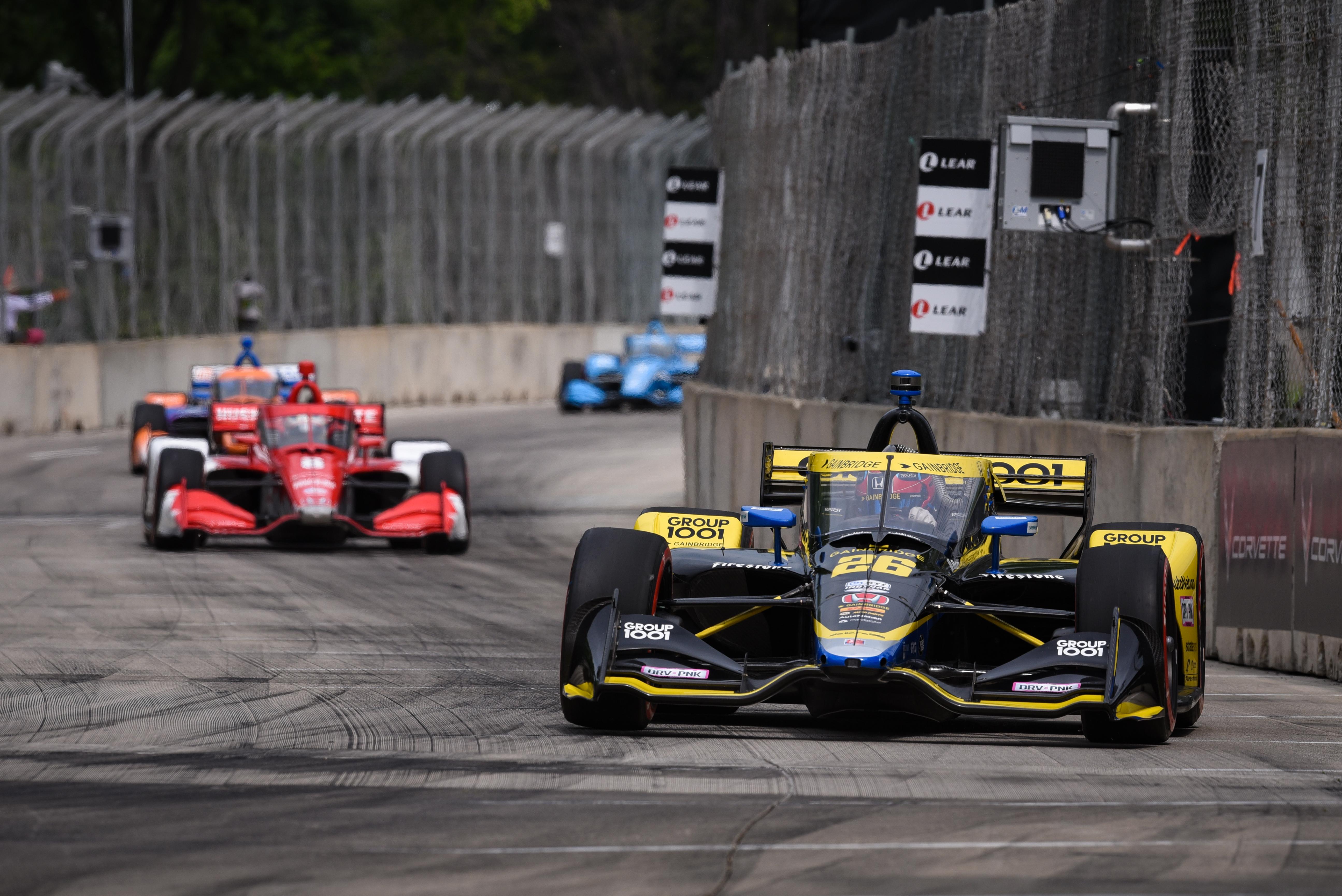
Anything Penske turns its attention to usually works out well!
While Belle Isle was a good race track, it wasn’t capable of the kind of ‘bring motorsport to the people’ philosophy that the Downtown district can achieve.
“More than half” of the circuit, along Jefferson Avenue and the river, is open to the public, free of charge, and a host of entertainment is lined up with the likes of DJ Steve Aoki playing.
IndyCar has had a lot of success with its Nashville street race, which debuted in 2021, and it’s perhaps building off of the concept there to deliver much more than just a race.
Tony Cotman was consulted on the project, having designed the Nashville street course.
A guide to the 1.7-mile track
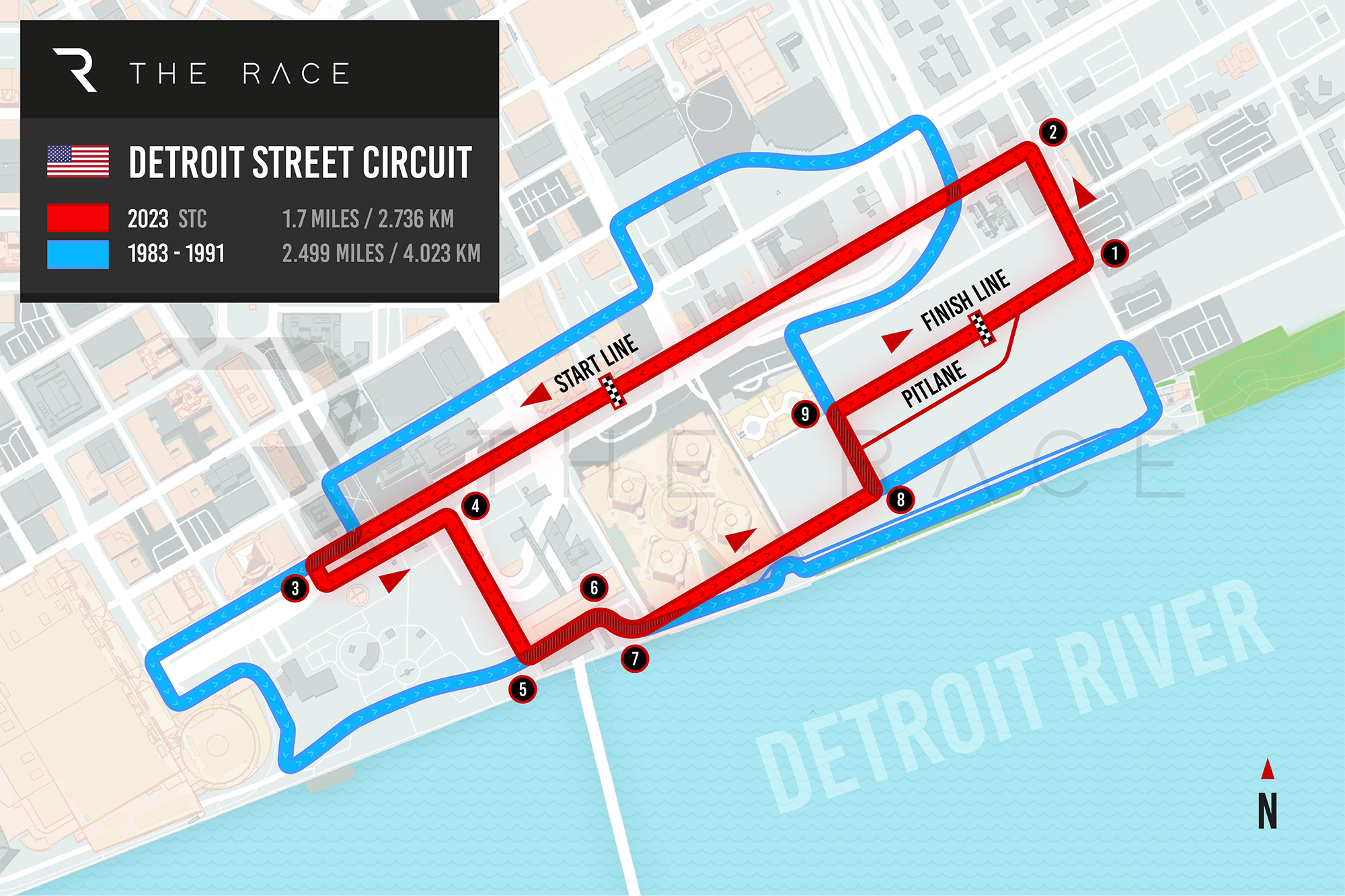
Turn 1 is a really inviting, wide entry where it looks like cars could go two- or three-wide, but it’s barely two-wide on the exit as the corner narrows. It looks like Turn 9 at Nashville after the bridge there, but much tighter on the exit.
A bit like the first two corners at Baku, you’ve got a pair of 90-degree corners.
The exit off Turn 2 is going to be vital for a long straight where the cars will be reaching around 190mph.
The Turn 3 hairpin at the end of the straight is squared off and it’s nice and wide, so overtaking should be fun here. If you do get passed on the inside, you can stay wide and look for a cutback move.
Saying that, the next corner is a tight right-hander so if you go for the cutback you’ll be on the outside, so we might not see that move too often.
The following straight is downhill so that will make the Turn 5 left-hander tricky under heavy braking, although assuming you make it through unscathed there’s no room in the Turns 6/7 section – which is a sort of tight ‘S’ bend that also goes uphill onto the back straight past the GM Renaissance Center, a round building that’s quite distinctive.
At the end of the straight there’s a 90-degree left-hander and then a 90-degree right-hander. Just before the right turn is the pit entry, which leads on into the split pitlane.
One other note – the race will start on the longest straight, so between Turns 2 and 3. The finish line is adjacent to the pitlane heading towards Turn 1.
What was the F1 track like here?
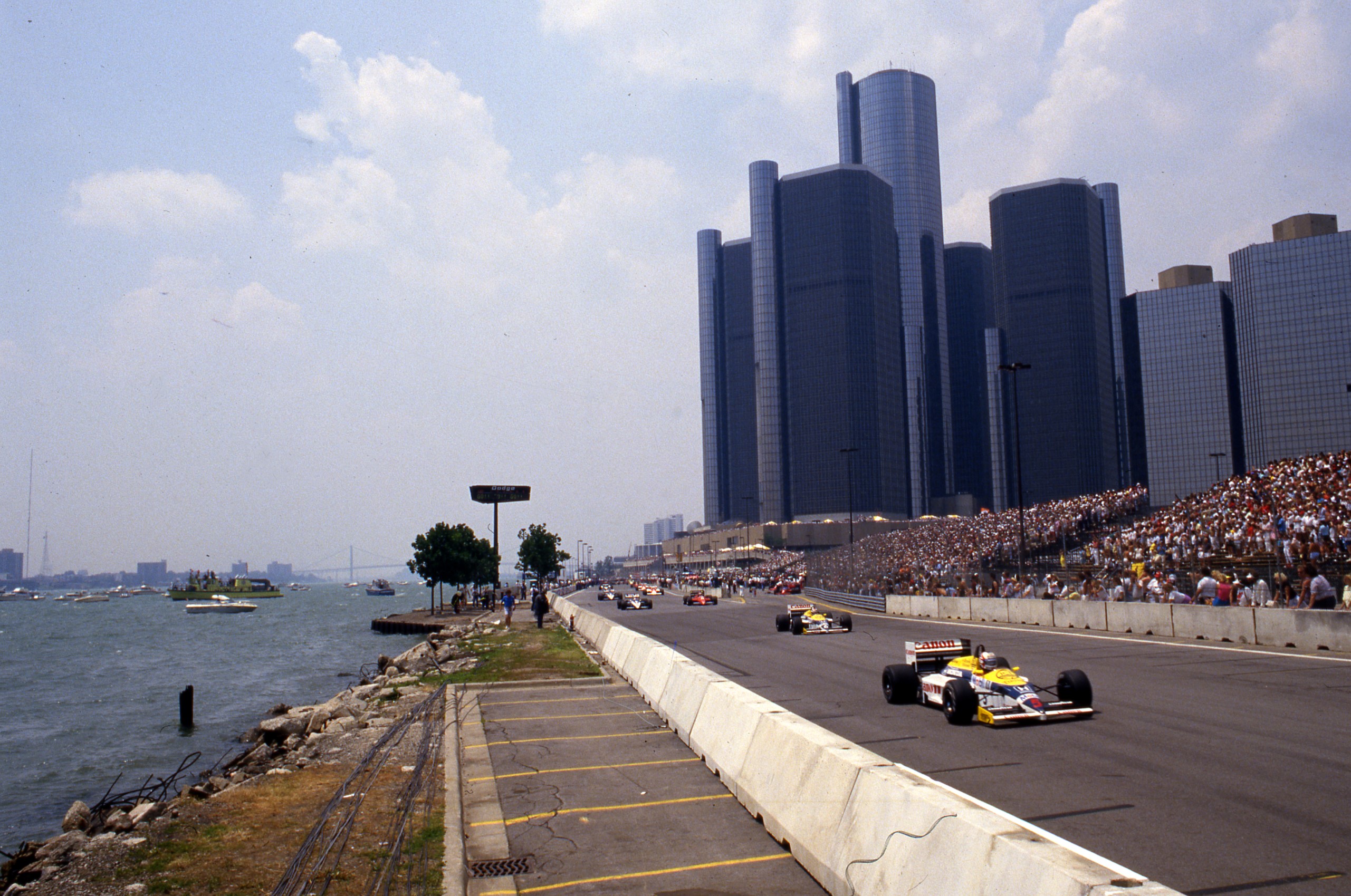
It’s probably fair to say that Formula 1 had a love-hate relationship with Detroit’s Downtown track in the 1980s.
The first race in 1982 started with cancelled practice and a postponed qualifying, with inadequate escape roads and barriers to blame.
Throughout its time on the calendar from 1982-88, it fought criticisms over the racing surface breaking up, the ferocity of the bumps and eventually the temporary pitlane – which was the reason used to remove it from the calendar. The surface – which featured a railroad crossing – especially was often a problem.
But it was also praised for the welcome F1 received at the venue.
Ultimately the idea of the event was ambitious and it was something F1 had to try, Detroit being the home of American car making. Making it the record-breaking third event in the US at the time was certainly an honour, too.
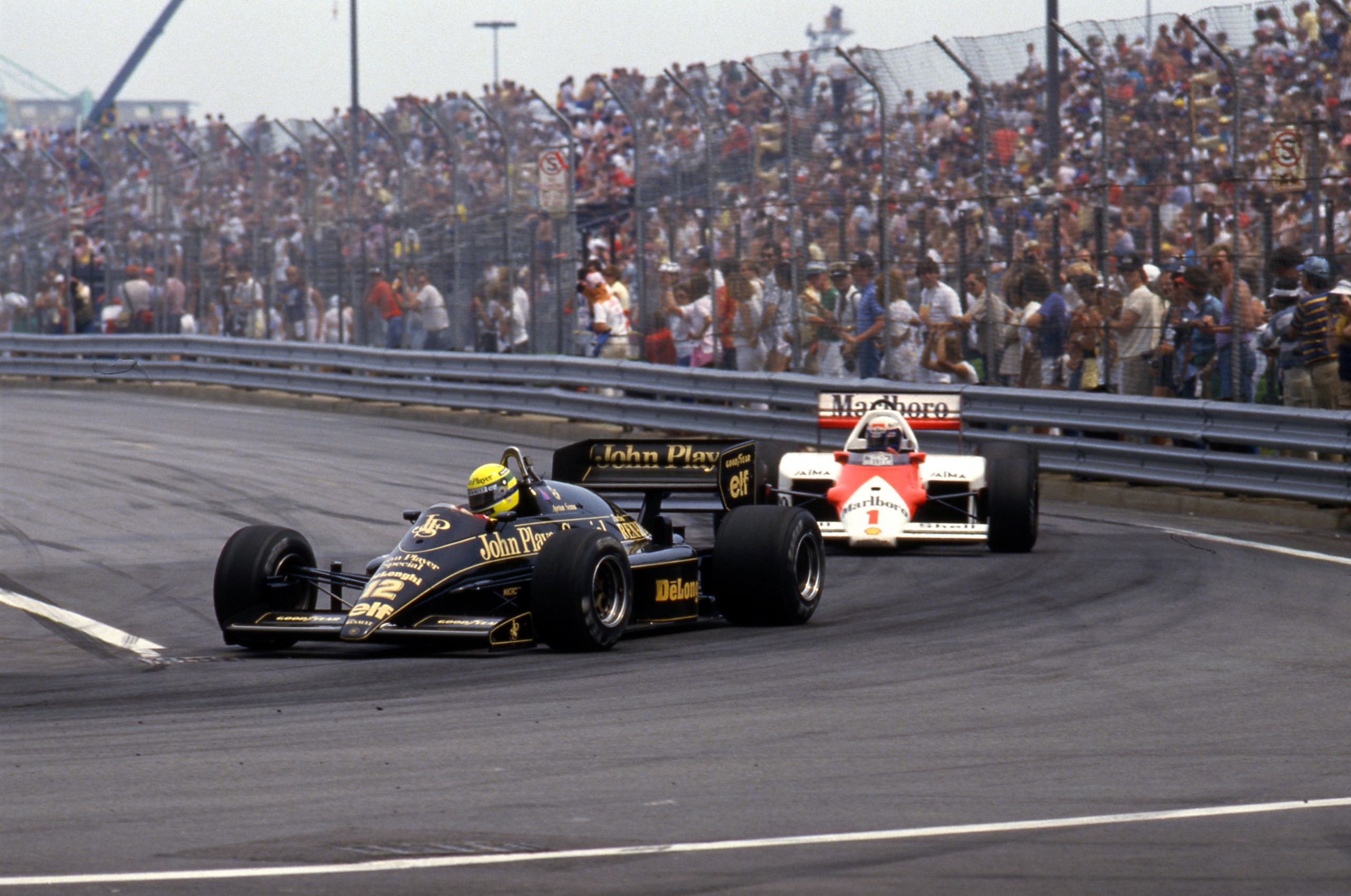
Despite the questions over the organisation, a lot was done for 1983 including a revised first sector, lots of resurfacing and other surface improvements, and probably most significantly the removal of the Jefferson Street hairpin.
But by 1988 it was clear that the circuit hadn’t evolved enough to meet the high standards of F1.
F1 had initially planned to move to none other than Belle Isle – which IndyCar has moved from right now – but that never came off.
From 1989-91 the race was held downtown with IndyCar instead, with the removal of the unpopular chicane being the major edit. IndyCar switched to Belle Isle as the general disruption and cost to run the event downtown proved its downfall.
Ayrton Senna won the most races in the F1 era, claiming three victories on the track.
The split pitlane
So this is… interesting.
Once in the pitlane, the drivers will either go left or right depending on which side their pitbox is. So if you picture an imaginary line down the centre of the pitlane, half will pit on the left and half on the right.
It was done because there’s not a long enough suitable stretch of straight road to pit on anywhere else around the track. Exactly half of the length IndyCar needed for a pit was found in a GM car park, which has been resurfaced and repurposed with this unique solution.
IndyCar did have a split pit in Baltimore in the early 2010s, but that was just a few cars split off. This is the first time half the field will be split.
The biggest issue will be merging on the pit exit. There will be to lines trying to come together and you just know some drivers aren’t going to yield.
Penske Corporation president Bud Denker’s response to that problem is: “I’m sure they’ll figure that out.”
What are the drivers saying about the event?
The Race asked some drivers last week to give their thoughts on the track and the event itself.

Josef Newgarden: “I think the event is going to be A-plus. The track, I can’t deny I loved Belle Isle and it’s a shame we’re not going back to Belle Isle.
“But I really think from an event standpoint it’s going to be a home run. If you’re there for the fans, the engagement, the community, what they’re doing is really going to be amazing.
“Having said that, I don’t know about the track, it’s always hard to say until you’ve been on the simulator and so on. Maybe it will be a great race.
“I don’t have a big opinion on it yet. It’s short, it’s technical, it’s mostly tight corners.
“It seems like Nashville if anything but also different from Nashville. If there’s anything it’ll be most close to, it’ll be that.”

Alexander Rossi: “I think the event is going to be amazing. I know that Bud and Jonathan [Gibson, Penske VP of marketing and business development] and everybody at Penske Entertainment have done [everything] to make this an event not just a race, it’s pretty amazing.
“The location is fantastic, I know where they are at in terms of suite sales, it’s off the charts, so I think it’s going to be a hell of a show.
“And obviously any time you go to a new track it’s exciting because it levels the playing field.
“So yeah, I’m looking forward to it.
“In terms of the actual track I’ve got no idea. I know it’s a split pitlane, which will be interesting to watch. That’s about it.”
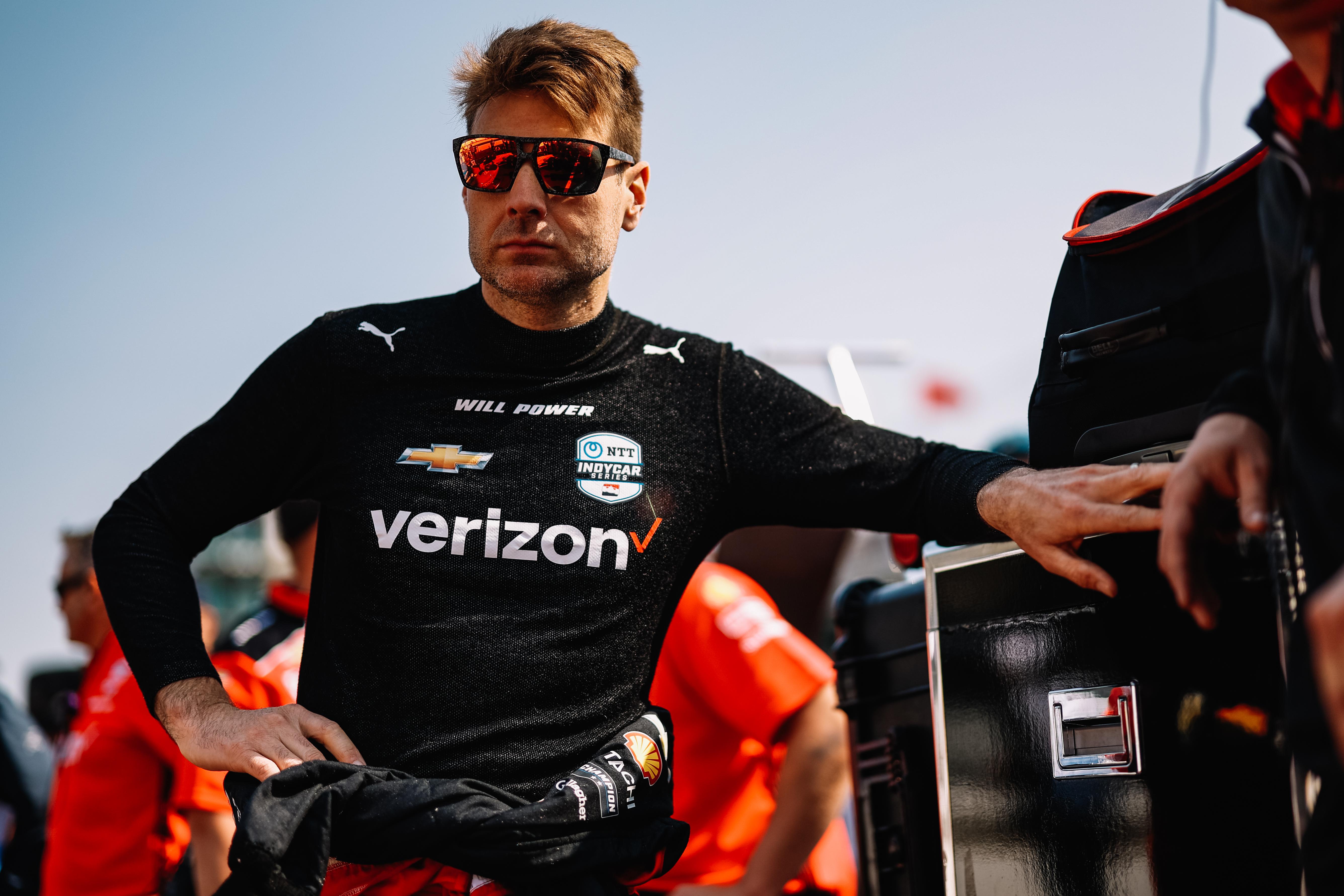
Will Power: “It’s hard to tell on the sim honestly. It’s bumpy, but I think they’ve ground some [road down to reduce bumps].
“It’ll be an interesting track. It’ll be extremely tight over the field in terms of times because there’s not many corners.
“It’ll be very tough qualifying.”


